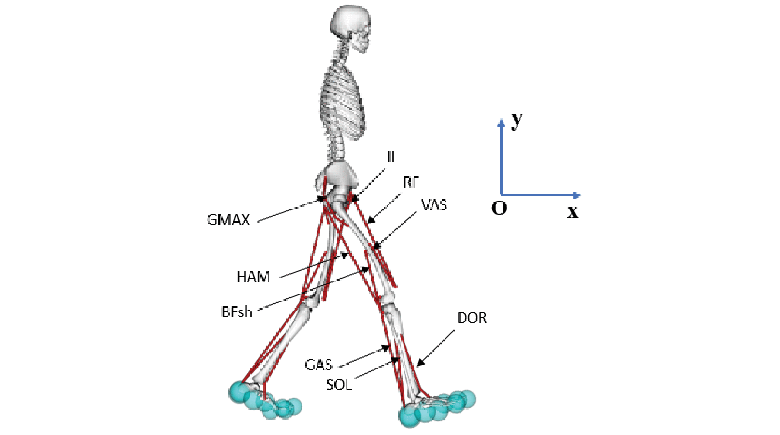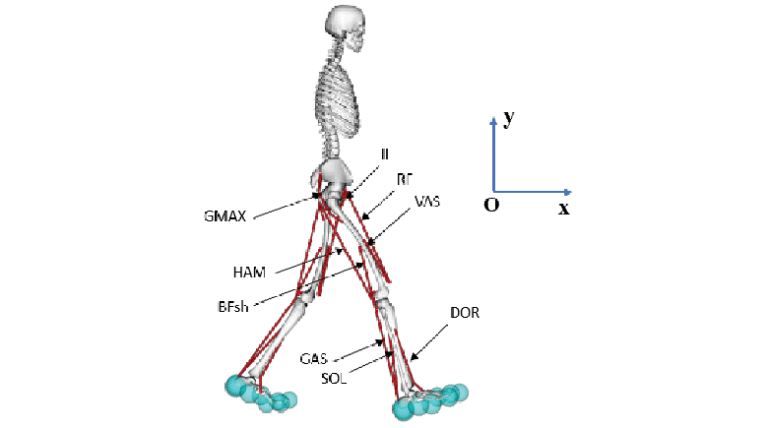
Predictive simulation based on dynamic optimization using musculoskeletal models is a powerful approach for studying human gait. Predictive musculoskeletal simulation may be used for a variety of applications from designing assistive devices to testing theories of motor control. However, the underlying cost function for the predictive optimization is unknown and is generally assumed a priori. Alternatively, the underlying cost function can be determined from among a family of possible cost functions, representing an inverse optimal control problem that may be solved using a bilevel optimization approach. In this study, a nested evolutionary approach is proposed to solve the bilevel optimization problem. The lower level optimization is solved by a direct collocation method, and the upper level is solved by a genetic algorithm. We demonstrate our approach to solve different bilevel optimization problems, including finding the weights among three common performance criteria in the cost function for normal human walking. The proposed approach was found to be effective at solving the bilevel optimization problems. This approach should provide practical utility in designing assistive devices to aid mobility, and could yield insights about the control of human walking.

